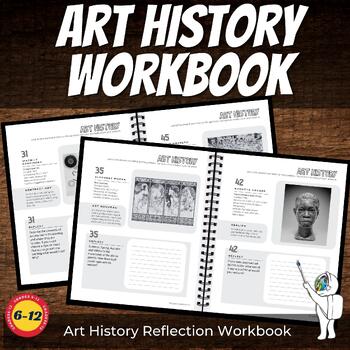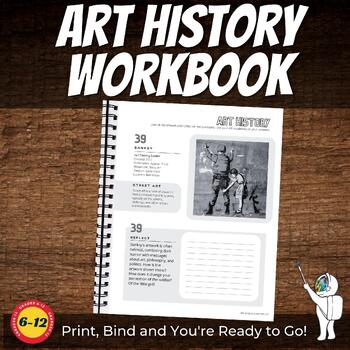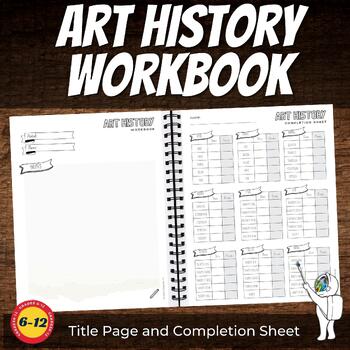Art History Reflection Workbook Printable PDF, Middle School, High School Art
- PDF
Description
This Art History Workbook is a printable PDF created in grayscale for easy printing and can be used in Middle or High School Visual Arts, ELA, and/or History Classrooms. Each page features a famous piece of art with a unique writing prompt. This resource is perfect for the writing and critical thinking required by the Common Core Standards and help students to cite evidence from the artwork. Each artwork includes; Title of the work, Artist, Date, Movement, Definition of the Movement, Medium & Location of the piece.
Great for use in the classroom or distance learning, 45 artists cover 33 art movements, each with a different prompt. It can also be used as homework. The entire workbook is created in grayscale and is perfect for printing and binding for middle school classrooms.
This self-contained workbook includes a student cover and completion sheet!
Includes Artwork by the following 45 Artists:
- Mary Cassatt
- Diego Rivera
- Claude Monet
- Archibald Motley
- Georgia O'Keeffe
- Franz Kline
- Laura Wheeler Waring
- Pablo Picasso
- Amrita Sher-Gil
- Franz Marc
- Bridget Riley
- Grant Wood
- Edward Hopper
- Frida Kahlo
- Edvard Munch
- Wayne Thiebaud
- Edgar Degas
- Keith Haring
- Henri Mattisse
- Vincent van Gogh
- Salvador Dali
- Jean-Michel Basquiat
- Andy Warhol
- Romare Bearden
- Faith Ringgold
- Paul Cezanne
- Jacob Lawrence
- Roy Lichtenstein
- Katsushika Hokusai
- Georges Seurat
- Wassily Kandinsky
- Gustav Klimt
- Piet Mondrian
- Marcel Duchamp
- Alphonse Mucha
- Umberto Bocchioni
- Yayoi Kusama
- Robert Smithson
- Banksy
- Johannes Vermeer
- Odilon Redon
- Augusta Savage
- Lee Krasner
- El Anatsui
- Julie Mehretu
Artwork from the following 33 Art Movements:
- Impressionism
- Social Realism
- Harlem Renaissance
- American Modernism
- Abstract Expressionism
- Cubism
- Modern Indian Art
- German Expressionism
- Op Art
- Regionalism
- American Realism
- Surrealism
- Expressionism
- Pop Art
- Neo-Expressionism
- Fauvism
- Post-Impressionism
- Activism
- Ukiyo-E
- Pointillism
- Abstract Art
- Symbolism
- Bauhaus
- Dadaism
- Art Nouveau
- Futurism
- Installation Art
- Land Art
- Street Art
- Baroque Art
- Symbolism
- Realism
- Nsukka
Completion/Points Recording Sheet
Ways to Use in the Classroom:
- Early Finisher Work
- Bell-Ringers
- Substitute Lessons
- Supplement to other Projects
- Homework
©A Space to Create Art, LLC.
Copyright Fair Use Rationale: The full Concept of these slides was conceived and created by Sabrina Wingren. Artist artwork featured is: Historically significant artworks, Readily available on the Internet, A low-resolution copy of the original artwork and are unsuitable for commercial reproduction.





